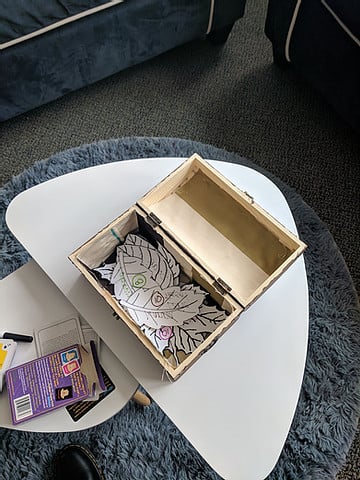The Container
In trauma-resolution treatment, a container is a compartment in your mind to keep past situations or people you want to prevent from intruding into your everyday life. I’m not sure why we call this technique “Container.” It seems like it should have name that inspires much more security. I suppose “an impenetrable, inescapable vault concealed in a remote location accessible only to you” may be a bit of a mouthful. Particularly when explaining the concept to a new client.
The Container technique is often taught right after learning the Safe Space for those who are preparing for reprocessing difficult and traumatic experiences. Once created, it helps you put away what is on your mind and refocus your thoughts and emotions on what you want. Should an unwanted thought or memory intrude into your consciousness, you can learn to sweep it into your container until you want to attend to it. Container is also a useful technique for putting away ‘unfinished processing’ at the end of a therapy or journaling session.
…But Don’t Throw Away the Key!
Okay, sometimes you should. How do you know? This can be difficult, even for those who have mastered this technique. Knowing when you will want to access a memory or a difficult relationship in the future becomes easier with mindful practice. My recommendation is that you almost always want to have the ability to access a ‘contained’ memory. You want to regain control over your life. Throwing away the ‘key’ is like relinquishing control over to fate or happenstance.
You Want Me to Taste It?!
Yes. Just like developing your Safe Space, you want to employ all 5 senses when creating a container for your memories. What kind of material is your container made from? What color(s) is it? Describe in detail the texture of your container. How do you secure it? What sounds are made when you lock it up? What does it smell like when you open it to put something in it? Do you get a taste in your mouth when placing an intrusive memory in it? Where will you keep it? How long does it take to get there? Is your container kept at ground level, up in the air, or deep underground? Is it submerged in water? Is it kept in the dark? Is it hot and humid or cold and dry? The more you can envision your container and where it is stored, the more securely it will hold the things you place in it.
That Mental Tupperware Cupboard
I think most homes have it. That cupboard where all the Chinese takeout dishes, random Cool Whip tubs, and Rubbermaid containers land. Mine vacillates from a disorganized mess – lids with no matches, towers of squarish and round stacked precariously together, to mildly organized – all broken and unmatched tossed, neat stacks of similar size and shapes. Your mental containers can vary according to purpose, but you do want to have a bit more thought for how you organize them. For example, you might want to keep your sweet old grandmother that passed when you were 10 in a different place than the high school jock that bullied you incessantly. In order to do this effectively, it takes mindful practice.
I’m not suggesting you need psychological organizing lessons from Marie Kondo here. When I explain the process of ‘container organization’ to new clients, I use a few different analogies depending on their age and interests. I’ll ask if the place where you keep your memories is more like an overstuffed clothes closet, a smelly gym locker, a file drawer jammed full, the proverbial junk drawer, a crowded toybox, or a foot locker that wouldn’t close even if a hippopotamus sat on it. By the way, I do use the hippo image a lot. It helps people remember that the hippocampus is the part of the brain that helps us organize our memory. ????

It is Worth it Before the End
My container has always been the closet of my childhood bedroom. I won’t go into the reasons for this here, but you could read about it more in my upcoming memoir. If you want to, contact me for a free sample. Over the years of reprocessing my past, I’ve organized this closet to the point where it functions really well. It took a lot of time. Sometimes I would need months of journaling and therapy sessions to decide what to do with a particular memory. Did I want to keep all of it or just parts of it? Could I repurpose it or upcycle it into something new and useful? Does it go on the shelf with similar memories, or need a separate container so it doesn’t make everything around it stink?
When working with kids, I help them make a physical container to keep in my office. They make a ‘leaf’ for each traumatic memory to store in their container. Organizing your ‘container storage space’ can provide you with peace of mind. It can reduce the impact of a triggering situation, and help you regain control more quickly when something springs out from your own childhood closet unexpectedly. I’d be happy to send you a short description of how to build your own container.







